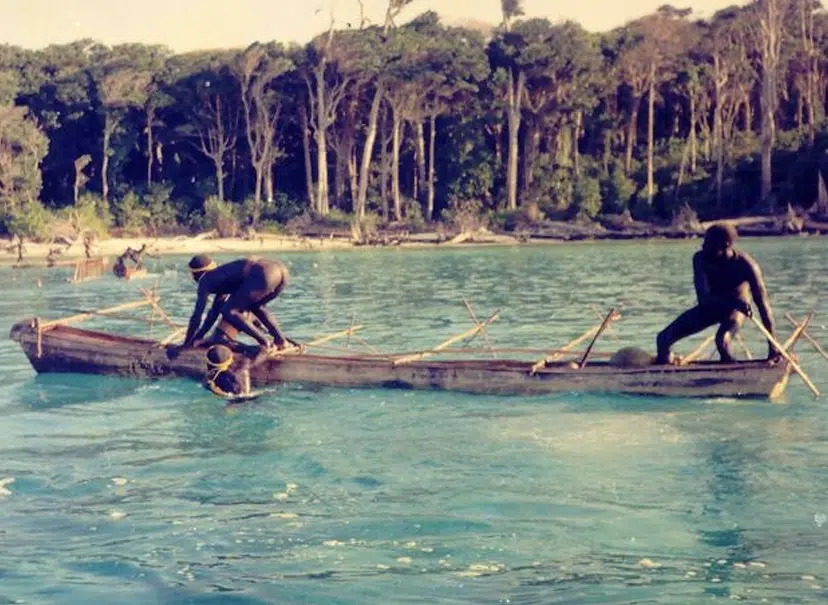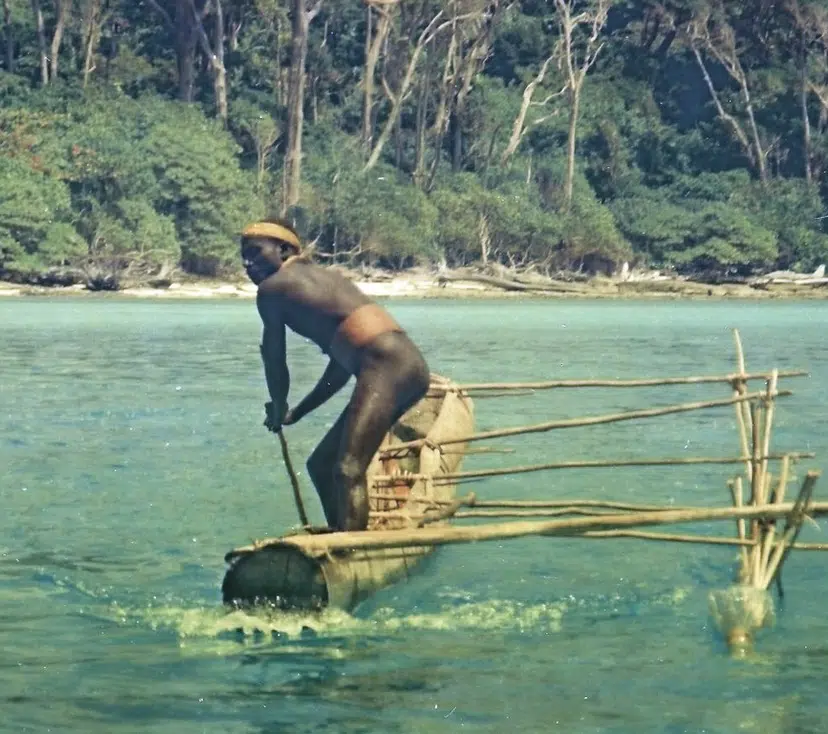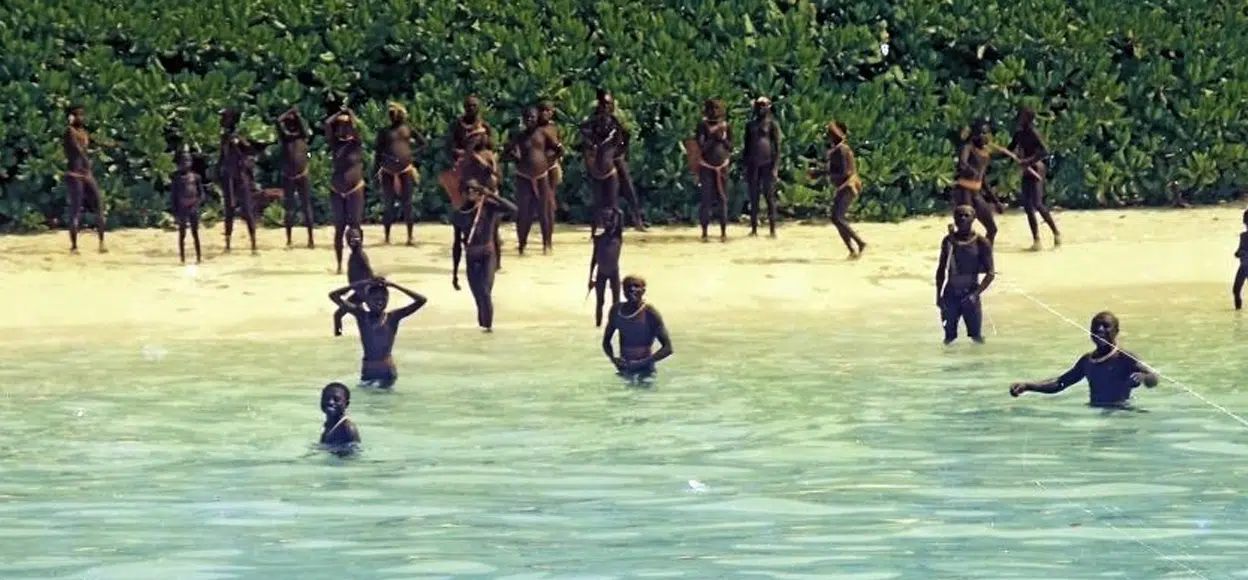
The world’s last and most isolated stone age tribe lives on North Sentinel Island, off the southwest coast of South Andaman, India.
In her analysis of interactions and contacts with the Andaman Islanders, Zarine Cooper, a specialist who has verified the indigenous peoples’ existence on the islands for the past two millennia, reveals that they have only ever received visits from researchers and slave raiders.
Furthermore, it should be noted that throughout the occupation of India by Britain, only a total of five British administrators visited the North Sentinel Island.
Describing the Sentinelese tribe of India’s remote Andaman Islands in his travel journals, the thirteenth-century explorer Marco Polo wrote: “They are a most violent and cruel generation who seem to eat everybody they catch.”
Isolated from the modern world

On November 21, 2018, the BBC reported: “An American man has been killed by an endangered tribe in India’s Andaman and Nicobar islands.” This was in reference to the killing of John Allen Chau l, a 27-year-old man from the state of Alabama in the United States. Chau’s mission had been to spread Christianity to these tribes, and he had traveled to the area for this reason. But who exactly are the Sentinelese?
According to Phillip Endicott et al. in their paper “The Genetic Origins of the Andaman Islanders,” the Onge and Sentinelese are inhabitants of the southern Andaman Islands. They were perpetually at war with the nomadic Jarawa tribe, who were fierce warriors and defenders of their lands.
The study supports the growing evidence of an early movement of humans through southern Asia and indicates that there are in fact phenotypic similarities between the Sentinelese and African groups. Early human migrants were capable of reaching all the islands of southeast Asia and, therefore, Near Oceania by the late Pleistocene.
Such a dispersal, according to Endicott et al., is consistent with the scattered distribution of Negrito populations, native to the Austronesian region. All lines of evidence—cultural, historical, linguistic, and genetic—support the conclusion that the Andaman Islanders have been isolated for a substantial period of time.
As per an Indian government policy document shared by the country’s Press Information Bureau, as a result of lack of contact, census-taking on the Sentinelese has relied primarily on photographing of the island from a distance. Hence, it has been estimated that the North Sentinel Island specifically is inhabited by roughly fifty to one hundred individuals
Surveys of this island have not found any evidence of agriculture. Instead, the community seems to follow the lifestyle of hunter-gatherers. They attain their food through fishing, hunting, and collecting wild plants and restrict themselves to life on their indigenous lands of the island. The Sentinelese are for all intents and purposes still in isolation and rely on highly primitive practices for sustenance.
The Indian government has sought to preserve the Sentinelese way of life essentially by respecting the tribe through the adoption of an eyes-on and hands-off approach. To this day, the tribe remains a pre-neolithic, Negrito tribe, which lives in complete isolation from the rest of civilization. In fact, it wasn’t until 1991 that researchers first got in touch with them. This was done by a group of anthropologists from India.
India’s tribal policy

Dr. Verrier Elwin was a great champion of the rights of tribes situated within the borders of India. He was British and quite fond of the tribes in general, with a great concern for their welfare. This made him a passionate partisan as is seen from his war-time comparative study “Loss of Nerve.”
In his study, Elwin pleaded for the protection of tribes, but his views were often attacked and deemed controversial. Verrier Elwin attributed the deplorable and impoverished conditions of tribes to their contact with the outside world, which had led to indebtedness and loss of control over their land and forests. His teachings inspired several policy makers of India.
Jawaharlal Nehru, the first Prime Minister of India, developed the idea of Tribal Panchsheel, which allowed for tribal injustice to be addressed through principles valuable to the tribes themselves. Thus, concrete parameters were set forth with five governing principles as a guiding light to any future policies.
The first of these principles is that any group of peoples should be allowed to develop on their own terms based on their own capacities. Hence, the imposition of alien values inapplicable to a specific tribal group should be avoided. In this regard, the rights of a specific group of people to their own land should be respected, meaning that while they might be trained, they should ultimately administrate and govern themselves.
In other words, tribal areas should not in any manner be ruled and overwhelmed by external factors or other schemes. Rather than judging results of social development by statistics or the amount of available funding attributed to certain projects, the inherent human character and value to the group in question should be at the forefront.
In India, in order to provide special legal protection to tribes, such as the Sentinelese in this case, primitive groups are listed under a status known as the Particularly Vulnerable Tribal Groups (PVTGs). This ascertains their protection under the Andaman and Nicobar Islands (Protection of Aboriginal Tribes) Regulation of 1956. The specified policy declares traditional areas occupied by the tribes as reserves and prohibits entry of any and all non-members except when due authorization is granted.
Photographing or filming of tribal members has likewise been proclaimed illegal. The entire North Sentinel Island along with the five-kilometer coastal sea has been declared a tribal reserve, and a protocol designating circumnavigation of the North Sentinel Island has been drafted.
Ships, coast guard aircrafts, and marine police boats are ever-present and keep tabs on the island so as to maintain the safety of the tribes through adherence to regulations by outsiders. Coastal sea areas of up to five kilometers have likewise been designated as tribal reserve areas. This is to ensure that fish, turtles, and other sea life remain abundant for the exclusive use of the Particularly Vulnerable Tribal Groups.
To further protect tribal communities and members, the government of India has enacted the Forest Rights Act. This is otherwise known as the Secluded Tribes and Other Traditional Forest Dwellers Act, the Tribal Rights Act, or the Tribal Land Act. India’s policy has been one geared towards the protection of tribes and tribal culture unlike what has been the case with the European conquistadors of the Americas.
Thanks to India’s strict tribal protection policies, one of the most isolated tribal groups in the world continues to follow a primitive lifestyle despite the ever-evolving advancement of other societies throughout the globe. The Sentinelese have, therefore, also come to be known as the last remaining Stone Age tribe in the world.
See all the latest news from Greece and the world at Greekreporter.com. Contact our newsroom to report an update or send your story, photos and videos. Follow GR on Google News and subscribe here to our daily email!



